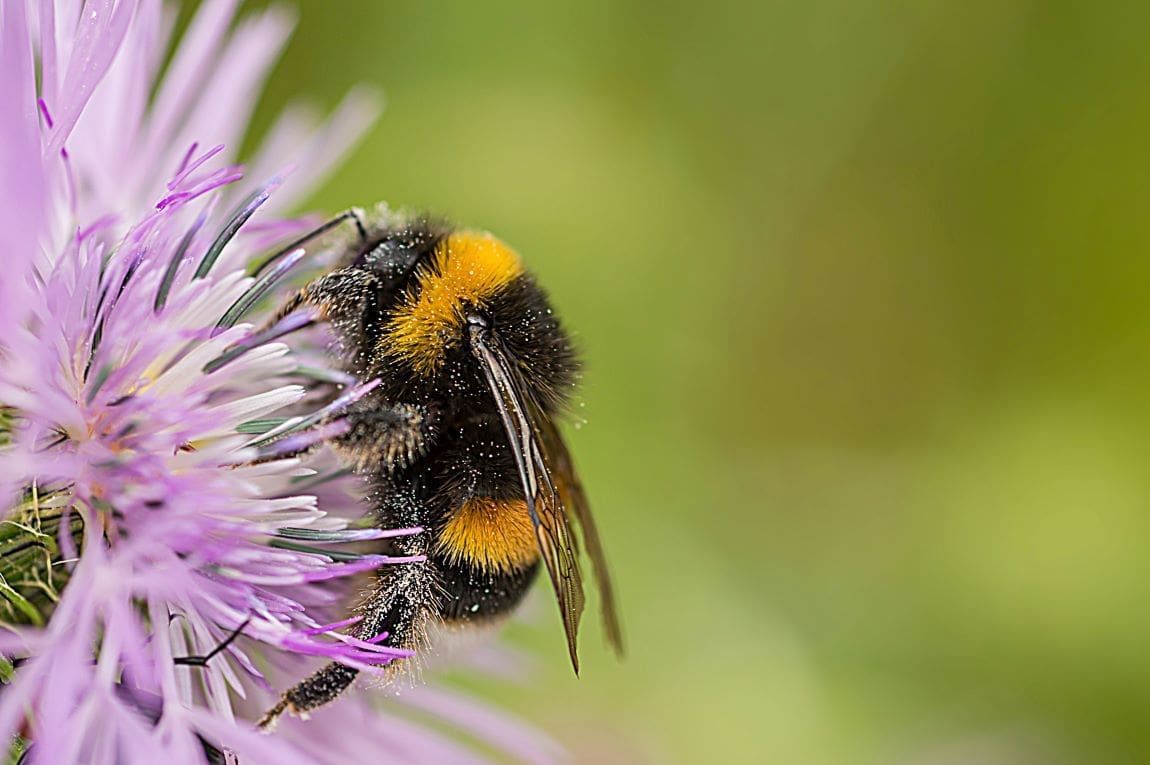A new study published in Nature Sustainability by a team of international researchers, including scientists from the University of Southern California (USC) Dornsife College, has provided compelling evidence that pesticide use is a significant factor contributing to the alarming decline of wild bee populations across the United States.
The study, titled ‘Impact of Pesticide Use on Wild Bee Distributions Across the United States’, was led by Laura Melissa Guzman, along with co-authors Elizabeth Elle, Lora A. Morandin, Neil S. Cobb, Paige R. Chesshire, Lindsie M. McCabe, Alice Hughes, Michael Orr, and Leithen K. M’Gonigle. Their research highlights the urgent need for rethinking pest control strategies to protect these crucial pollinators.
The importance of wild bees
Wild bees play an indispensable role in maintaining the health and stability of ecosystems. Unlike honeybees, which were introduced to North America from Europe in the 17th century primarily for honey production, wild bees are native to the continent and have evolved alongside local flora. These bees are critical for the pollination of a wide range of plants, including many agricultural crops that humans rely on for food. Their decline could have devastating consequences, not only for biodiversity but also for food security.
The study’s findings
The research by Guzman and her colleagues delves deep into the relationship between pesticide use and the distribution of wild bee species across the contiguous United States. The researchers employed a comprehensive approach, analyzing a vast dataset that included over 200,000 unique observations of more than 1,000 wild bee species – approximately one-third of all known bee species in the U.S. This data was gathered from museum records, ecological surveys, and community science initiatives spanning from 1996 to 2015.
The researchers also incorporated data from several government sources, such as the U.S. Geological Survey’s National Land Cover Database and the Pesticide National Synthesis Project. By integrating these diverse datasets, the team was able to correlate wild bee sightings with factors such as land use, pesticide application, and the presence of honeybee colonies.
Pesticides: a major culprit
The researchers found a strong correlation between high pesticide use and a sharp decline in wild bee sightings. In areas where pesticide application was intensive, some wild bee species were observed up to 56% less frequently than in areas with minimal or no pesticide use. This finding suggests a direct link between pesticide exposure and the reduction in wild bee populations, reinforcing concerns that current agricultural practices may be unsustainable if they continue to rely heavily on chemical pest control.
Interestingly, the researchers also explored whether certain crops could be contributing to wild bee declines. While some crops have been suspected of harming wild bees, Guzman and her team found that wild bee sightings were just as common in heavily farmed areas as in less agricultural regions. This indicates that the type of crop alone may not be as significant a factor as the pesticides used in these areas.
The study also examined the impact of honeybee colonies, an introduced species that some experts have suggested might compete with wild bees for resources. However, the researchers found little evidence to support this idea. While the presence of honeybee colonies did not seem to significantly affect wild bee populations, the study’s authors cautioned that more detailed research is needed to draw definitive conclusions.
Implications for pest management and agricultural practices
The findings of this study underscore the need for a shift in how pests are managed in agricultural and natural environments. The researchers advocate for the adoption of integrated pest management (IPM) strategies, which prioritize the use of natural predators, habitat modification, and other non-chemical methods to control pest populations. Pesticides, under IPM, would be used only as a last resort, minimizing their impact on non-target species like wild bees.
Laura Melissa Guzman emphasized the importance of long-term studies to better understand the full impact of pesticides on wild bees. “We need to combine these large-scale studies that span continents with field experiments that expose bees to chemicals over longer periods and under natural conditions,” she said. This approach would provide a more accurate picture of how pesticides affect bee populations over time and help develop more effective conservation strategies.
Challenges in assessing pesticide risk
The current study builds on earlier work by Guzman and her colleagues, which pointed out significant flaws in the ecological risk assessments (ERAs) used to evaluate pesticide safety. These assessments often focus on honeybees, whose responses to pesticides are then extrapolated to other bee species. However, the earlier research showed that this method can result in vastly inaccurate estimates of pesticide toxicity, potentially underestimating the risks to more sensitive wild bee species.
Guzman argues that regulatory agencies and policymakers need to rethink their approach to assessing pesticide risks. “When we only focus on the western honeybee, we’re ignoring the unique responses of other wild bee species to pesticide exposure,” she said. This call to action highlights the need for more tailored risk assessments that consider the diversity of pollinators and their varying sensitivities to pesticides.
Moving forward
The decline of wild bees is a complex issue with far-reaching consequences. As this new research reveals, pesticide use is a major factor driving these declines, and addressing this issue requires a fundamental change in how we approach pest control. The adoption of integrated pest management practices, along with more rigorous and species-specific risk assessments, could help protect wild bee populations and ensure the continued health of ecosystems and agriculture.
The authors hope their work will inspire further studies and lead to more sustainable agricultural practices that support both human and environmental health.
Journal Reference:
Guzman, L.M., Elle, E., Morandin, L.A. et al. ‘Impact of pesticide use on wild bee distributions across the United States’, Nature Sustainability (2024). DOI: 10.1038/s41893-024-01413-8
Article Source:
Press Release/Material by University of Southern California (USC) | USC Dornsife
Featured image credit: Eduardo Goody | Unsplash



